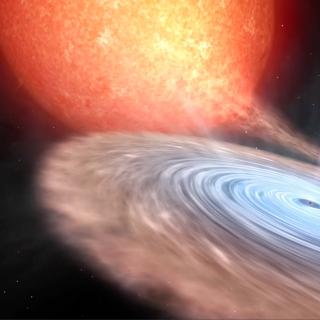Bibcode
Torres, M. A. P.; Casares, J.; Jiménez-Ibarra, F.; Álvarez-Hernández, A.; Muñoz-Darias, T.; Armas Padilla, M.; Jonker, P. G.; Heida, M.
Referencia bibliográfica
The Astrophysical Journal
Fecha de publicación:
4
2020
Revista
Número de citas
109
Número de citas referidas
102
Descripción
We present intermediate-resolution spectroscopy of the optical counterpart to the black hole X-ray transient MAXI J1820+070 (=ASASSN-18ey) obtained with the OSIRIS spectrograph on the 10.4 m Gran Telescopio Canarias. The observations were performed with the source close to the quiescent state and before the onset of renewed activity in 2019 August. We make use of these data and K-type dwarf templates taken with the same instrumental configuration to measure the projected rotational velocity of the donor star. We find vrot sin i = 84 ± 5 km s-1 (1σ), which implies a donor to the black hole mass ratio for the case of a tidally locked and Roche-lobe filling donor star. The derived dynamical masses for the stellar components are and . The use of q, combined with estimates of the accretion disk size at the time of the optical spectroscopy, allows us to revise our previous orbital inclination constraints to 66° < i < 81°. These values lead to 95% confidence level limits on the masses of 5.73 < M1(M⊙) < 8.34 and 0.28 < M2(M⊙) < 0.77. Adopting instead the 63° ± 3° orientation angle of the radio jet as the binary inclination leads to and (1σ).
Proyectos relacionados

Agujeros negros, estrellas de neutrones, enanas blancas y su entorno local
Los agujeros negros y estrellas de neutrones en binarias de rayos-X son laboratorios únicos para explorar la física de estos objetos compactos. No solo permiten confirmar la existencia de agujeros negros de origen estelar a través de mediciones dinámicas de sus masas, sino que también permiten investigar el comportamiento de la materia y la
Montserrat
Armas Padilla